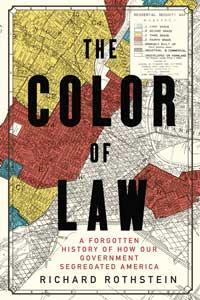SCHOOLS THAT SUCCEED: HOW EDUCATORS MARSHAL THE POWER OF SYSTEMS FOR IMPROVEMENT
The many books that document the problems plaguing public education overlook an important point: we can learn just as much— if not more—by studying the schools doing it right. In Schools That Succeed: How Educators Marshal the Power of Systems for Improvement (Harvard Education Press), longtime education writer Karin Chenoweth profiles public schools where administrators work with classroom teachers to ensure a school’s total focus centers on teaching and learning.
Building on her previous books about lessons to learn from “unexpected schools,” her latest work includes her “observations of educators who understand how to confront the ways in which schools have been traditionally organized and change them in ways that sometimes seem very simple and yet have profound implications.” In each chapter, Chenoweth takes the reader through a different example—one in Los Angeles County, another in Mobile, Alabama, two in New York state, among others—where administrators and educators have devised thoughtful ways to increase student engagement and improve classroom instruction.
For instance, she highlights the work of Artesia High School in the ABC Unified School District in Los Angeles County. The district caught Chenoweth’s eye when she read about its strong labor-management partnership that has helped its students thrive. She describes how Artesia’s veteran principal, Sergio Garcia, supports teachers by fostering positive student behavior and by encouraging students not typically considered ready for Advanced Placement classes to enroll and succeed in them with support. She also explains how the school’s culture of collaboration has enabled its students, many of whom come from low-income families, to make gains on state standardized tests.
Chenoweth notes that for Garcia, improving Artesia “was a matter of understanding the ‘deep need’ teachers have to do their job well … and building the systems to help them do it.”
By “systems,” she refers to “how schools organize things to get stuff done.” To drive home exactly how educators build such systems, she concludes each chapter with bulleted lists of systems and observations. These often include procedures to develop leaders within a school building, the creation of a master schedule that makes time for well-rounded instruction, and the scheduling of common planning time for teachers.
Chenoweth writes that, despite the continued assaults on public education, “these schools have restored my belief that it is possible for schools to act as crucibles of democracy.”
THE COLOR OF LAW: A FORGOTTEN HISTORY OF HOW OUR GOVERNMENT SEGREGATED AMERICA
More than 60 years have passed since Brown v. Board of Education, yet many of our nation’s schools are still highly segregated by race. An important reason for this, among many, is residential segregation. In The Color of Law: A Forgotten History of How Our Government Segregated America (Liveright), Richard Rothstein of the Economic Policy Institute offers a history of how our neighborhoods’ demographics came to look the way they do. Rothstein focuses specifically on racism against African Americans, and his book presents abundant evidence showing that racial segregation in housing was an explicit and deliberate government policy, not merely the result of personal choice or economic happenstance.
Rothstein covers a period from roughly 1900 through the end of the 1960s, and he looks at government actions at all levels, from federal to local. Each chapter lays out a separate case of government-enforced policies that prevented African Americans from living in white areas and, in many cases, took previously integrated neighborhoods and made them more racially homogeneous. Readers learn about segregation in public housing, discriminatory zoning ordinances, court enforcement of racially restrictive real estate contracts, and other topics. One of the most blatant cases concerns the Federal Housing Administration (FHA) and discriminatory mortgage finance practices. During the time of expanding homeownership in the 1940s and 1950s, FHA guidelines prevented African Americans from obtaining federally backed mortgage insurance, which kept African Americans out of newly built suburbs.
The Fair Housing Act of 1968 ostensibly ended these patterns of overt discrimination, but by then the damage had already been done: African Americans had lost out on the post–World War II housing boom. Unable to obtain suburban mortgages, many remained renters in struggling cities or fell victim to predatory lending practices. African American families missed opportunities to accumulate wealth through home equity and found themselves in heavily segregated urban cores with growing poverty. These denied opportunities form the backdrop to the racial justice issues of our time, from Ferguson, Missouri, to Baltimore to Chicago.
Rothstein implores us to correct this historic injustice. He acknowledges the political and logistical difficulties of undoing decades’ worth of discriminatory housing policy, but he offers some concrete steps. These include the simple act of teaching our students about this dark episode of our history. He writes, “If young people are not taught an accurate account of how we became segregated, their generation will have little chance of doing a better job.”


